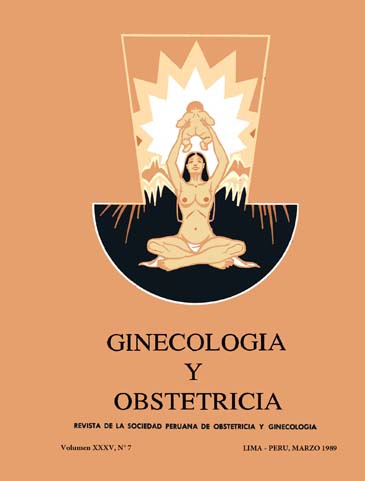UTERINE ADENOMYOSIS CLINICAL EPIDEMIOLOGICAL STUDY
DOI:
https://doi.org/10.31403/rpgo.v35i1087Abstract
2150 hysterectomies performed during the years 1984-1986 of which 547 had a diagnosis of uterine adenomyosis by pathologic examination were reviewed, 452 cases it was possible to assess clinical and epidemiological characteristics were selected. Predominantly in the corresponding age group 41-50 years with a preferential distribution in premenopausal age (p <0.05) it is demonstrated. The background of parity and (p <0.05) obstetric and gynecological surgery, particularly the presence of uterine curettage is associated with increased frequency of disease (p <0.05). No statistically significant association was found for the submission of adenomyosis as: age of onset of menarche, age at first intercourse, number of pregnancies per patient and surgical history of previous cesarean. Clinical symptoms for which patients attended were: abnormal uterine bleeding and abdominal and pelvic pain. AI clinical examination is often considered the uterus within normal limits and regular surface. It is concluded that the presence of uterine adenomyosis can be established from a high index of suspicion in symptomatic patients who are in age, premenopausal with a history of multiparity and / or direct surgical trauma to the uterus.Downloads
Download data is not yet available.
Downloads
Published
2015-06-26
How to Cite
Sandoval Jimenez, E., & Jefferson Cortéz, L. (2015). UTERINE ADENOMYOSIS CLINICAL EPIDEMIOLOGICAL STUDY. The Peruvian Journal of Gynecology and Obstetrics, 35(7), 14–19. https://doi.org/10.31403/rpgo.v35i1087
Issue
Section
Artículos Originales
















